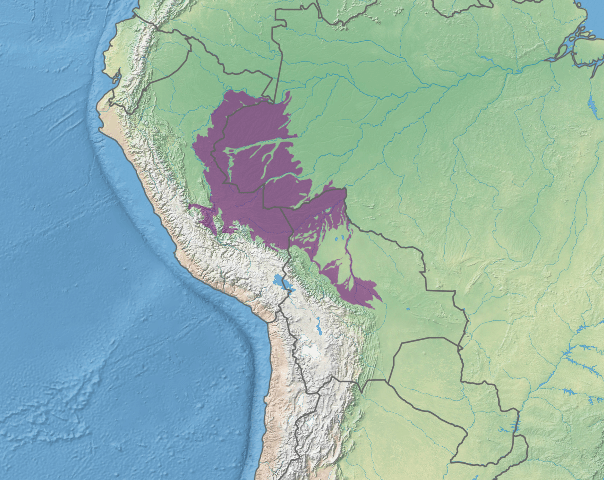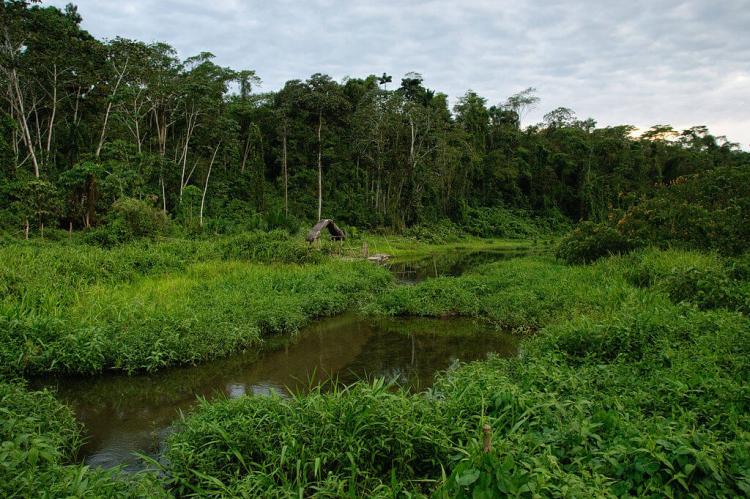Southwest Amazon Moist Forests: A Biodiversity Haven in the Upper Amazon Basin
The Southwest Amazon moist forests represent one of the world's most biologically rich and ecologically significant regions. Encompassing vast tracts of intact tropical rainforest in the upper Amazon Basin, this ecoregion spans parts of Brazil, Peru, and Bolivia.
The Last Great Wilderness: Conservation in the Southwest Amazon Moist Forests
The Southwest Amazon moist forests represent one of the world's most biologically rich and ecologically significant regions. Encompassing vast tracts of intact tropical rainforest in the upper Amazon Basin, this ecoregion spans parts of Brazil, Peru, and Bolivia. Known for its exceptional biodiversity and relatively undisturbed landscapes, the Southwest Amazon moist forests are crucial for the conservation of numerous species and ecosystems. The region's inaccessibility and the presence of protected areas have helped preserve its natural habitat, making it a vital area for global biodiversity.
Geography and Topography
The Southwest Amazon moist forests are located in the upper Amazon Basin, covering an extensive area across Brazil, Peru, and Bolivia. The ecoregion is characterized by a relatively flat landscape dominated by alluvial plains dissected by undulating hills and high terraces. This varied topography creates a mosaic of habitats, each supporting a unique assemblage of plant and animal species.
The region is divided into four sub-basins: Pastaza-Marañon and Ucayali in Peru and Acre and Madre de Dios-Beni in Brazil and Bolivia. These sub-basins drain into the Amazon River through major tributaries, including the Juruá, Purus, and Madeira rivers. The Serra do Divisor, a small mountain range, bisects the ecoregion from north to south along the Peru-Brazil border, further contributing to the region's topographical diversity. Elevations range from 300 meters (980 feet) in the west to 100 meters (330 feet) on the region's eastern edge.
Climate and Ecological Variation
Given the vast expanse of the Southwest Amazon moist forests, the ecoregion exhibits significant climatic, edaphic (soil-related), and floristic differences. Generally, the northern part of the region is wetter and experiences less seasonal variation than the southern part. The northern forests receive approximately 3,000 mm (120 in) of rainfall annually, while the southern forests receive between 1,500 and 2,100 mm (59 to 83 in) yearly. This variation in rainfall contributes to differences in vegetation, with the northern forests sharing less than half of their tree species with the slightly drier and more seasonal southern forests. Temperatures across the ecoregion range from 22 to 27 °C (72 to 81 °F) throughout the year.
Flora and Fauna
The Southwest Amazon moist forests are renowned for their dense, towering forests. Canopies reach heights of 30 to 40 meters (100 to 130 feet), and some emergent trees stand as tall as 50 meters (160 feet). The incredible diversity of these forests is evident, with up to 300 species of trees found within a single hectare.
- Flora: The northern region of the ecoregion is characterized by species such as rubber, mahogany, balsam wood, tagua nut, and strychnine trees. In contrast, the southern region features kapok, kumaru, possumwood, Brazil nut, and Calycophyllum spruceanum trees. Areas with lower biodiversity are often dominated by highly competitive bamboo species, such as Guadua, which thrives in the region's moist conditions.
- Mammals: The ecoregion supports the highest number of mammal species recorded in the Amazonian biogeographic realm, with 257 species, including 11 endemics. Notable mammals include the jaguar (Panthera onca), tapir (Tapirus terrestris), capybara (Hydrochoerus hydrochaeris), kinkajou (Potos flavus), peccary (Pecari tajacu), and a variety of primates such as marmosets, tamarins, and squirrel monkeys. Two- and three-toed sloths, giant anteaters (Myrmecophaga tridactyla), and ocelots (Leopardus pardalis) also inhabit these forests.
- Birds: Birdlife in the Southwest Amazon moist forests is equally impressive, with 782 recorded species, including 17 endemics. The region's diverse avifauna contributes to its status as one of the most important areas for bird conservation in the Amazon.
- Reptiles and Amphibians: The ecoregion hosts a strong presence of reptile and amphibian species, adding to its overall biodiversity. These species thrive in the region's humid, tropical climate, providing ideal survival conditions.
Conservation and Protection Status
The Southwest Amazon moist forests remain largely intact, thanks in part to their inaccessibility and the establishment of several protected areas. Among the most notable protected areas is Manú National Park in southern Peru, a UNESCO World Heritage Site that preserves pristine lowland forests within this ecoregion. The park's remote location and strict protection measures have helped safeguard its diverse ecosystems, making it a critical refuge for countless species.
Nearby, the Tambopata National Reserve protects seven major forest types and serves as a sanctuary for game species that are over-hunted in other areas, such as tapirs, spider monkeys, jaguars, capybaras, white-lipped peccaries, and caimans. This reserve plays a crucial role in maintaining the ecological integrity of the Southwest Amazon moist forests.
In Bolivia, the Manuripi Heath National Reserve covers 18,900 square kilometers (7,300 square miles) of dense tropical forest within the southernmost part of the Southwest Amazon moist forests ecoregion. This reserve is essential for conserving the region's unique flora and fauna and provides a critical buffer against deforestation and habitat loss.
Conclusion
The Southwest Amazon moist forests represent one of the Amazon Basin's most biologically diverse and ecologically important regions in the Amazon Basin. Spanning vast areas of Brazil, Peru, and Bolivia, this ecoregion is home to an extraordinary array of species, many of which are found nowhere else on Earth. The region's varied landscapes, ranging from alluvial plains to undulating hills and high terraces, create a complex mosaic of habitats that support an incredible diversity of life. The preservation of these forests is vital for the conservation of biodiversity and the overall health of the Amazon Basin and its role in global climate regulation.

Map depicting the location of the Southwest Amazon moist forests (in purple)
